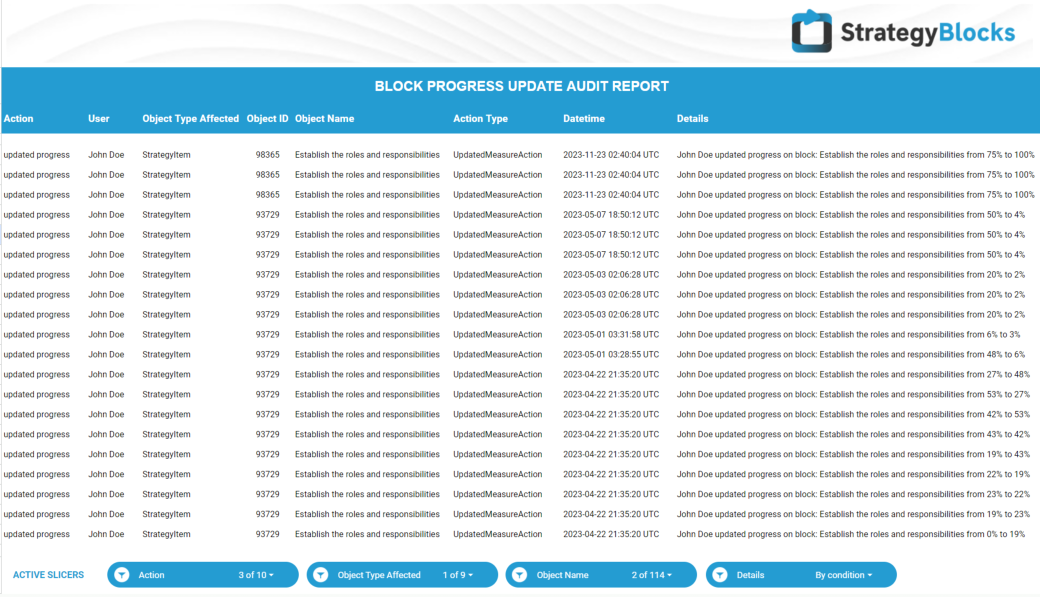StrategyBlocks Feature Focus – New ‘User Actions’ Report
Having the ability to track small incremental changes made in the past, can provide much-needed insight into the status of your organizational performance today. Audit reporting of historical actions is a useful tool for any business and plays a crucial role in understanding past performance and driving accountability. So why is having the ability to report on change so important?
Sound governance
Companies globally (public and private) are subject to a wide and varied array of laws and regulations, and auditing past operational activity can help to ensure that the company is compliant with these requirements. Traditionally this has been directed at financial performance, but through our conversations in the market, we are finding that the need to journal and audit work delivery, and review the impact of risk is gaining a great deal of interest. They are very much intertwined with strategic execution, so organizations today need to be able to have a complete view of where they are, and how they got there.
Operational efficiency
Auditing past operational activity can help greatly to identify areas where the company can improve its efficiency. Access to this data allows us to see how we deliver our strategic objectives and potentially identify improvements.
Overall, the ability to audit past activity is an essential part of good corporate governance. By auditing operations, companies can protect themselves from fraud, improve their efficiency, and make better decisions. This can lead to cost savings, greater efficiency, and improved profitability.
In the November release of StrategyBlocks, we included the new User Actions Report download facility. Administrators can find the new feature under the Reports menu, in the Downloads section. The feature will allow a system administrator to:
- Define which user or user’s actions will be included in an output data set
- Whether or not to include that user(s) login history if desired
- And, specifying a defined date range for the data set
The data will be then output to a CSV file for offline analysis. The example below is formatted and configured to show all of the progress updates made by a specific user, for a particular piece of work, over a defined time period.
Thank you to the customers who contributed to the scope of this enhancement, as always we very much value your feedback and insights.




Leave A Comment